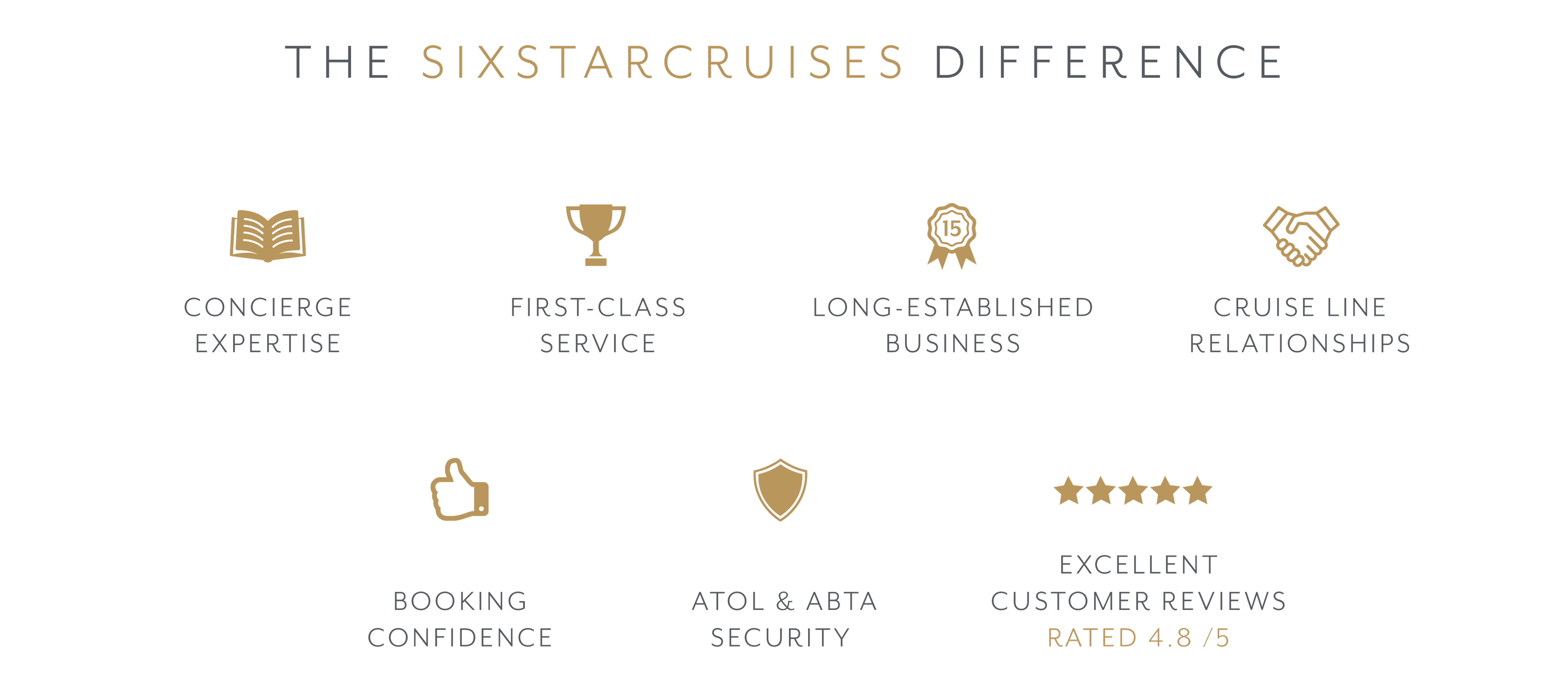Summary
LEARN BY EXPERIENCING
The Culinary Center on board Riviera, the first hands-on cooking school at sea, teaches you how to prepare a variety of exquisite dishes at your own fully equipped workstation in a state-of-the-art teaching kitchen. Passionate Chef Instructors offer guidance and inspiration to fine-tune your techniques, but each dish is prepared by you. Spend a delightful day at sea learning how to make fresh pasta, the fundamentals of cooking seafood or the secrets of traditional French cuisine.
A SAMPLE OF CULINARY CLASSES
Across the Isles
Seasonal farm-to-table recipes personify the cuisine and traditions of the British Isles. In more recent times, the region has embraced the myriad cuisines of the cultural melting pot that has shaped the isles and made cities like Dublin and London destination cities for foodies. Inspired by Darina Allen of Ballymaloe in Cork, Ireland, and other revered chefs of the region, this class is a far cry from bangers and mash.
Austin Renaissance: A Tex-Mex Fiesta
Executive Chef Kelly has had a chance to get to know this emerging culinary darling since her daughter and family have re-located to the Texas capital. As she samples the city’s most notable restaurants, she is constantly on the lookout for flavourful, savoury Tex-Mex recipes you can easily make at home. In addition to learning her favourite recipes, you’ll also try a featured cocktail from one of Austin’s mixology masters. If you love Tex-Mex food but are reluctant to try it at home, then this class is for you.
Caribbean Heart & Soul
Caribbean recipes are brimming with both heart and soul – and are easy to make at home too. Few cuisines can be called a true mosaic, but Caribbean cuisine is a magical fusion of tastes and cooking traditions from Africa, the Middle East and Europe. You’ll learn how to balance and bloom spices as well as layer and build flavours. These are skills you can use again and again, regardless of what you are cooking at home. Explore the unique cuisines and culinary diversity of islands throughout the region – the ultimate melting pot of delicious flavours and ingredients.
Discover Patagonia
The culinary world has its eyes on the cuisine of the Patagonia region. Regarded as the hot new cuisine, chefs have traveled to these remote parts to learn the secrets of Argentine grilling, as well as Chilean roasting and baking. Attend this cook-out class that features delicious and hearty dishes that you will definitely want to make at home to impress your friends. No meal in Patagonia is complete without wine, so a special focus will be made on sampling and pairing the region’s varietals.
In the Kitchen with Jacques
Help us celebrate the glorious career of our Executive Culinary Director, Jacques Pépin. Regarded in the chef community as the master of technique, Jacques has demonstrated a lifelong passion for culinary technique that inspired this class. Brush up on your knife skills and master the emulsion – the secret to perfect salad dressings. Prepare a collection of delicious dishes while practicing the basic techniques that chefs have learned from Jacques over the past six decades.
Mediterranean Journey
The Mediterranean is revered for its cuisine and this class allows you to take an epicurean journey around the region, celebrating signature dishes from France, Greece, Israel, Italy, Morocco, Spain and Turkey. Each class reflects your Chef Instructor’s personal favourites from their years of tasting and traveling throughout the Mediterranean. Without a doubt, this class is a guest favourite and the chefs enjoy featuring wines and recipes from their most recent journeys across the majestic Mediterranean Sea.
Most Requested Red Ginger
Our famed restaurant Red Ginger is the inspiration for our class devoted to Asian cuisine. In this class you will explore two diverse cuisines: Chinese and Thai. You will master classic Asian ingredients as well as fundamental cooking techniques such as knife skills, mise en place and high-heat cooking. You also will learn how to work with rice paper and pad Thai noodles.
EPICUREAN EXPLORATIONS
Our Culinary Discovery Tours™ take culinary exploration one step further. At select ports, accompany Chef Instructors while shopping for fresh ingredients ashore at local markets, experience authentic regional fare in private homes or chef selected restaurants and immerse yourself in the local culture through the lens of the cuisine.























































































































-large_thumb.jpg)






